 The Dog Collar Museum
The Dog Collar Museum
The word “museum” denotes an institution that acquires and takes care of a collection of artifacts and other objects of scientific, artistic, cultural, or historical significance and exhibits them to the public. The first things that most people think of when they hear this word are dinosaur skeletons, ancient relics, or old warfare. However, this isn’t the case for the following museums. These institutions displaying objects such as historic dog collars or toilets are a bit different, some would even say bizarre, yet they’re still very popular. Travellers who’ve already seen all the classics or are just looking for something odd shouldn’t miss these exciting places where they can learn lots of exceptional and unique information.
The Dog Collar Museum, Leeds Castle, Kent
Leeds Castle is a popular tourist destination that has a lot to offer — majestic, luxurious interiors, 500 acres of beautiful parklands, a maze, a grotto, a golf course, and a dog collar museum. Surprisingly, the unique collection of historic and fascinating dog collars spanning five centuries at Leeds Castle is the only one of its kind in Britain. Every year, more than 500,000 visitors from all over the world travel to Leeds Castle and enjoy the exhibition of more than 100 collars and related exhibits in the dog collar museum.
The collection of canine neckwear, which dates back to medieval and Victorian times, was originally assembled by the Irish medieval scholar, John Hunt, and his wife, Gertrude, who handed the collection to Leeds Castle in 1979 in memory of her husband. The dog collar museum also memorializes the Castle’s last private owner, Olive, Lady Baillie, who was a well known dog lover and whose love of humankind’s best friend inspired Gertrude Hunt to donate the collars.
International Spy Museum, Washington DC
The International Spy Museum, located within the 1875 Le Droit Building in the Penn Quarter neighbourhood of Washington, DC, was first open on July 19, 2002. It’s the only public museum in the United States entirely dedicated to the spy profession. The world’s largest collection of espionage tools includes more than 200 gadgets, weapons, bugs, cameras, vehicles, and other different technologies used for espionage throughout the world. Seeing how these artifacts look and work helps us to imagine how complicated, demanding, and dangerous missions of spies all around the world were.
The main purpose of the International Spy Museum is to show the spy profession to the public in a wider context so that people can understand the importance of espionage and its impact on current and historic events. It’s an exciting experience that will leave you with a decent knowledge of the history of espionage as well as of microdots, invisible ink, buttonhole cameras, and all the other undercover gadgets.
Vodka Museum, Moscow
 Vodka Museum
Vodka Museum
Where else should a museum dedicated to vodka be than in Moscow, the city where this strong spirit was discovered in fifteenth century? This popular tourist destination that displays an admirable collection of over 600 different exhibits is located at the complex “Kremlin in Izmaylovo“ near the Partizanskaya metro station. The museum provides a presentation on the centuries-long history of “little water,“ which is the Russian meaning of the word. The staff of the museum has lots of interesting stories to tell about the role vodka played in the history of Russian civilization. Furthermore, visitors learn the secrets of the vodka production process as well as the main ingredients of this popular drink.
The museum itself is not that big but the exhibition makes you thirsty so that you can enjoy some samples of Russia’s top-quality vodkas. However, these tasting sessions are extremely popular so if you want to enjoy a sip of some of the best vodkas, you should make a reservation.
The Museum of Bad Art, Boston
Art museums such as the Louvre in Paris, Tate in London, and New York’s Metropolitan Museum of Arts display the finest pieces of art ever made. Have you ever wondered what happens to those slightly less popular works of art? Well, if they’re too bad to be ignored, they might end up in The Museum of Bad Art. This community-based private institution brings the worst of art to the widest of audiences and celebrates the work of those who have gloriously failed.
The exhibition of the best pieces of bad art has become overwhelmingly popular and more and more people come to enjoy this spectacle of awfulness. The collection includes over 600 hundred pieces of different categories and styles. The atmosphere in the home of rejected arts is delightful; people laugh and lead lively discussions about the exhibited treasures. The Museum of Bad Art offers a lot of fun and a very exciting experience.
Sulabh International Museum of Toilets, New Delhi
 Sulabh International Museum of Toilets
Sulabh International Museum of Toilets
Dr. Bindershwar Pathak, founder of Sulabh International Social Service Organization, established a museum solely dedicated to the history of toilets. Toilets have played a crucial role throughout the history of humankind and this museum recaptures the historical development of this important part of our everyday lives. The museum displays rare objects of historical and cultural interest that display the evolution of toilets and their various designs all around the world from 2500 BC. It features an extensive display of privies, chamber pots, toilet furniture, bidets and water closets in use from 1145 AD to the modern times. It provides lots of interesting information on social customs and toilet etiquettes and even includes a rare collection of beautiful poems. Furthermore, the Sulabh International Museum of Toilets tries to help sanitation experts solve contemporary sanitation problems.
Bata Shoe Museum, Toronto
 Bata Shoe Museum
Bata Shoe Museum
The Bata Shoe Museum, located in downtown Toronto, offers four exhibitions, as well as lectures, performances, and various family events. Their vast collection includes more than 10,000 shoes, boots, and sandals of all kinds spanning about 4,500 years and an abundance of stories. It’s the biggest and only museum solely dedicated to footwear. The museum opened in the 1940s as a result of Sonja Bata’s passion for shoes. She travelled across the world with her husband, Thomas J. Bata of the Bata Shoe Company, and as time went by, she slowly gathered an impressive collection of shoes from different regions.
Their current exhibition called Roger Vivier: Process to Perfection opened on May 9, 2012 and is the first in North America dedicated to the master shoemaker. The exhibition is accompanied by long series of lectures, movies, and other events that reflect the life, work, and times of Roger Vivier.
Paris Sewer Museum, Paris
While all the other tourists in Paris are busy walking around the Louvre or the Eiffel Tower, there are always several groups of people walking beneath them, taking a tour of Paris’ sewers. The Paris Sewer Museum provides an exciting adventure in the form of a peaceful stroll through the damp and quiet sewer tunnels that date back to the year 1370 when the first underground system was built under the Rue Montmartre. The museum features a lot of interesting attractions explaining the history and construction of the sewer system.
The Parisian sewers are very popular and were featured in many famous books, such as Victor Hugo’s Les Misérables and Gaston Leroux’s The Phantom of the Opera. If you’re interested in engineering and public works or just want to see an unusual tourist attraction, the Paris Sewer Museum is a must see.
Museum of Funeral Carriages, Barcelona
 Museum of Funeral Carriages
Museum of Funeral Carriages
Barcelona is a beautiful city that attracts millions of tourists each year who travel there to see Gaudi’s famous architecture, to visit the Picasso Museum, and enjoy the Spanish sun. However, there’s one dark basement full of dusty funeral carriages that became a huge hit with tourists visiting Barcelona. Barcelona’s Museum de Carosses Fúnebres houses one of the world’s finest collections of funeral carriages and hearses. Visitors have to enter Barcelona’s Municipal Funeral Service building, where a security guard leads them to the museum.
The museum exhibits the hearses and carriages from the late 19th to the early 20th century. It provides a fascinating insight into the customs surrounding funeral ceremonies in Barcelona. Furthermore, the Museum de Carrosses Fúnebres features a rich collection of iconography and symbols. Admission is free.
The Salt and Pepper Shaker Museum, Tennessee
Gatlinburg, Tennessee is the home of the Salt and Pepper Shaker Museum, which displays more than 20,000 sets of salt and pepper shakers from around the world. The museum was founded by Andrea Ludden, an archaeologist who became fascinated by the history behind salt and pepper shakers. In addition, Andrea is writing a definitive anthropological study of salt and pepper shakers. The oldest pieces date back to the 1500s.
The collection includes all kinds of shakers; there are shakers honouring the Beatles, Mt. Rushmore, and the Apollo XI moon landing. The museum also includes a gift shop where you can purchase many of the same shakers that are displayed in the museum. Unless you’ve been to the Salt and Pepper Shaker Museum, you cannot imagine how amazing the world of salt and pepper shakers can be.
Vancouver Police Museum, Vancouver
 Vancouver Police Museum
Vancouver Police Museum
The last museum of our list is the Vancouver Police Museum, formerly known as the Vancouver Police Centennial Museum. It opened in 1986 to celebrate the centennial of the Vancouver Police Department. Apart from vintage motorcycles and counterfeit currency, their collection includes some unusual pieces such as skin samples showing contact wounds, confiscated home-made weapons, and a mock morgue with an autopsy table that may or may not have held Errol Flynn.
The museum, run by the Vancouver Police Historical Society, organizes several popular educational programs for students such as Mini Police Academy, Forensic Science, and Walking The Beat. Furthermore, it features several public programs, including Sins of the City Walking Tour and Forensic Science Drop-ins. The Vancouver Police Museum is located in the former Coroner’s Courtroom at 250 E. Cordova Street.
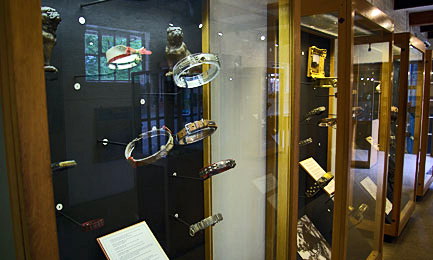
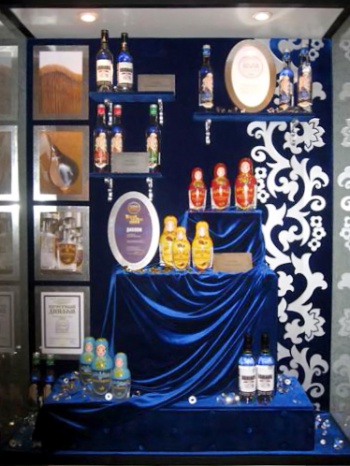

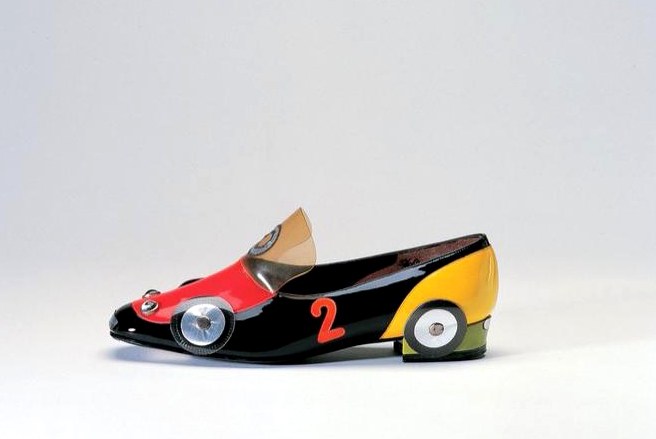
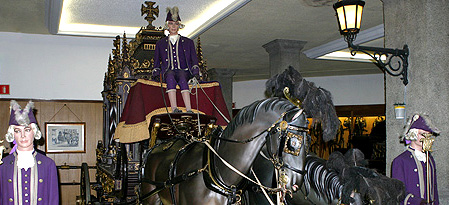
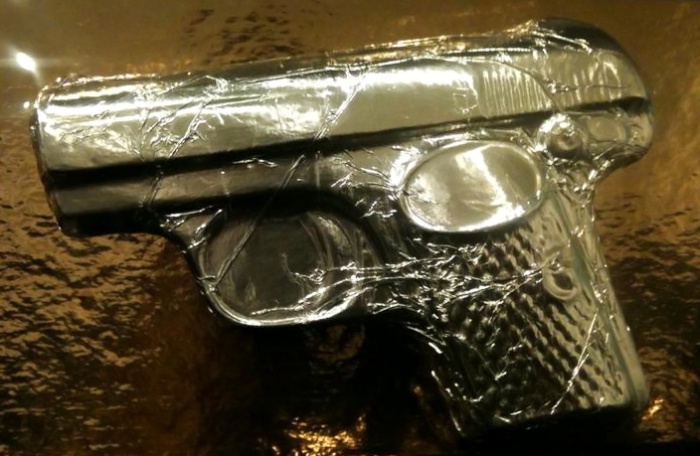
Thanks so much for including the Vancouver Police Museum on your list! We appreciate the thumbs up!
Just want to point out however, that we do not feature a “Mock Morgue.”
We have an actual, authentic morgue; we’re are located in a Heritage Building which served from 1931 to 1980 as the Vancouver City Morgue and primary autopsy facility as well as the Coroner’s Court. Errol Flynn was indeed autopsied here, and we have the photos to prove it!
We won’t show them to you however! But we do have lots of other interesting artefacts and photos and yes, even, body parts and samples taken during autopsies.
Thanks again for the kind words and best wishes to you.